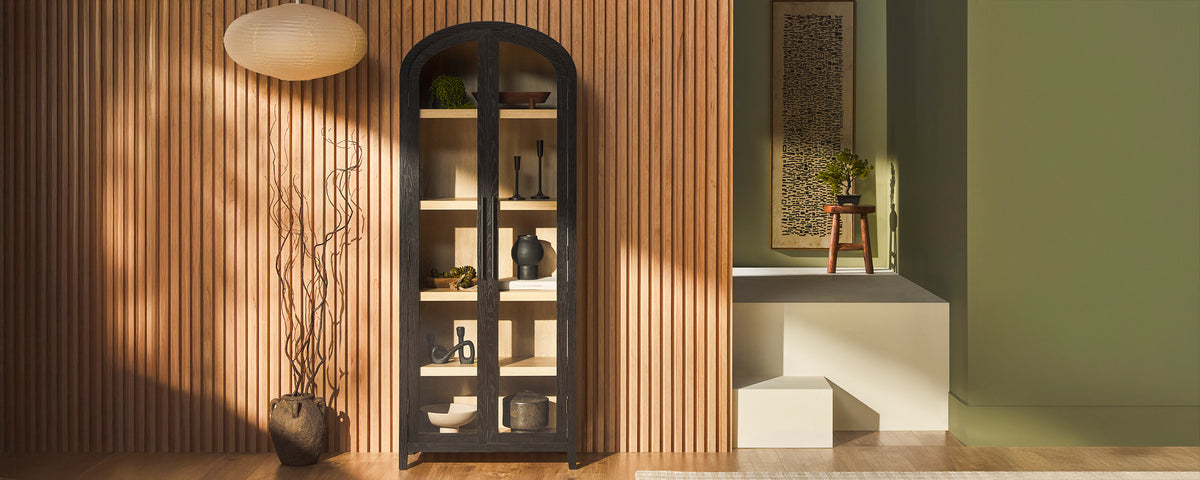Bohemian Interior Design Guide
Bohemian (boho) style has crystallized into a well-known interior design pillar, but its foundation originated on the fringes of mainstream society. Outcasts and counter-culturalists embraced an unconventional lifestyle that has left an eclectic signature in its wake. Since its inadvertent inception, creative types have gravitated toward boho expression because of its imaginative, carefree approach. Dive into bohemian design’s cultural, artistic history and see how it endures today.

History
Bohemian design’s earliest roots trace back to the Romani, a nomadic people who most likely migrated from India to Europe around the 12th century. As they wandered, they made a living with often-creative trades that could move with them, and they absorbed influences from many cultures into their colorful clothing and collage of customs. In France they were labeled as Bohémien after they were mistakenly thought to have arrived from the Czech Republic’s Bohemia region. Continually criticized as “outsiders,” the Romani have faced generations of discrimination, forcing them into removed, impoverished conditions.
In 19th century France, financially struggling artists sought refuge from the woes of mainstream society in Paris’s poorer Romani communities. They romanticized Romani culture despite its challenges as a haven for freedom, creativity, self-expression, and alternative ideals—an escape from the status quo. As they integrated themselves with Romani values and aesthetics, the term “bohemian” came to refer to these free-spirited, vagrant artists. Their travels would spread bohemianism to America, eventually influencing the countercultural Beat Generation of the 1950s and hippies of the 60s and 70s.

Characteristics and Principles
There is no formula or rulebook to bohemian interior design. It is notably, even purposefully, devoid of structure and order. Designers are loosely guided by ideas of global culture, art, antique, and nature to represent each unique interior, and unrestrained self-expression is encouraged above all else. These values often yield recurring characteristics seen throughout various boho designs, but it is important to note that these similarities reflect common interpretations rather than requirements.

Global Culture
The melting pot of cultural influences that can be spotted in boho design was passed down from the nomadic lifestyles of the Romani and traveling artists. Today, culturally significant travel souvenirs are a favorite décor choice among globe-trotting boho enthusiasts. This collage of cultures also begets and celebrates mismatched interiors. In the same room you might spot intricate Persian rugs, Indonesian-inspired ikat textiles, Moroccan mosaic patterns, bright upholstery and mandalas from India, Native American weavings, and opulent French traditional armchairs.

Art
Pioneered by artists, bohemian style naturally integrates all manner of creativity. This could mean a library wall full of books. Handmade pottery as vessels for flowers and morning cereal. Drawings, paintings, and photographs sprinkled across every surface. A record player singing in the corner, or an acoustic guitar standing at attention. Each piece is a celebration of some type of craftsmanship and a conduit for self-expression.

Antique
Boho’s humble and anti-materialistic origins generally favor a collection of well-loved items. Today, vintage and retro pieces are often incorporated to give a sense of timeworn hospitality. This again results in a cobbled-together assortment of mismatched furnishings. A crochet lace tablecloth handed down from grandma would be put to good use, and thrift stores are a treasure trove. Items with a softened, worn quality warm up their surroundings and each have a story to tell.
Nature
When hippies of the 1960s and 70s adopted bohemianism, they infused it with an enduring sense of environmentalism. This turns our focus toward natural materials. Wood and wicker furniture, wool blankets, or leather accents are common practice. One of the most iconic demonstrations of nature in boho interiors is houseplants. Suspend them from the ceiling in a handmade macrame hanger, drape them across a mantle, or scatter them around the floor for a green touch in every corner.

Maximalism
Free from rules and limitations, boho style encourages maximalism. More is more, and there is no such thing as “too much.” Bohemianism is busy not because it is materialistic, but because it celebrates possessions that are collected along life’s journeys, and every detail is a means to express oneself. Rooms are often packed with furniture, multiple layered rugs, wall-to-wall art, haphazard décor, wildly mixed colors and patterns, and houseplant collections that can rival a jungle, all in the name of creative freedom.

When each of those values collide, we often see mixed-and-matched interiors that are fraught with a myriad of colors, patterns, shapes, and textures. Every corner of the room is packed full of eye-catching details and rich, inviting colors that invite us to stay awhile in the comforting embrace of a boho home.
How have you interpreted this fluid style in your own space? Tag Walker Edison on social media to show off your boho haven.


